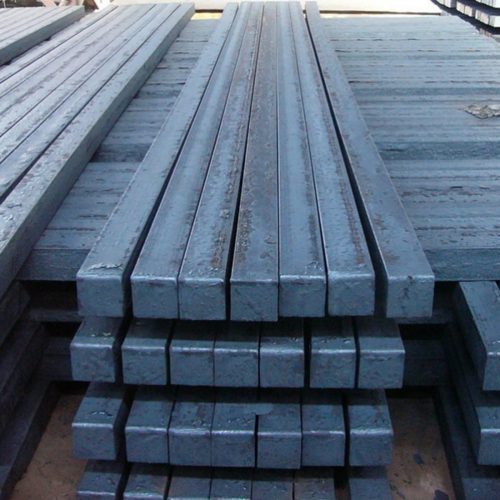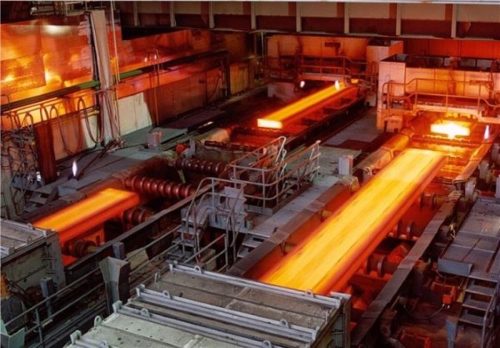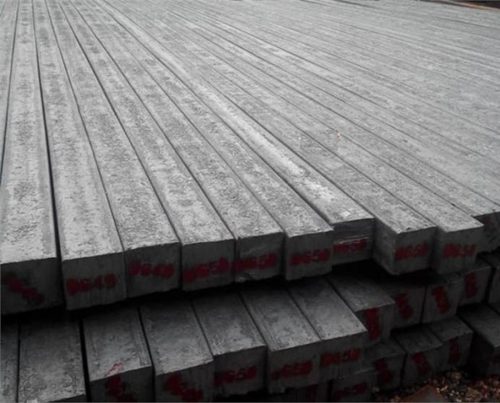Importing steel has become an important industry due to the increasing demand for this metal. However, before deciding to import steel billets, there is some important information that needs to be understood, including the steel billet import procedure and policies related to steel billet importation. To have a more detailed understanding of this issue, let’s follow the detailed content in the article below.

The steel billet production process may vary depending on the desired product specifications. Steel billets can be produced by casting or hot rolling.
Casting is the process where molten steel is poured into molds to solidify into the desired shape. Molds can be made of metal or sand, and the size and shape of the mold determine the size and shape of the billet. The solidified billet is then removed from the mold and transported for further processing.
Hot rolling is the process where steel billets are heated to high temperatures and passed through a series of rollers to reduce thickness and shape them into rectangular or square billets. The hot rolling process can be carried out in continuous or semi-continuous processes, depending on the required size and shape of the billet.
After steel billets are produced, they need to be properly handled and stored to maintain quality. The steel billet handling process includes transportation, lifting, and stacking. Steel billets are usually transported using cranes, forklifts, or conveyor systems. Lifting billets requires specialized lifting equipment designed to handle the weight and shape of the billet safely. Stacking billets requires careful planning to avoid damage and deformation of the billet.
Based on the current regulations of Vietnam, steel is known as a commodity not included in the list of prohibited export items. Therefore, individuals, businesses, or organizations importing this product can do so normally. However, before use, certain legal documents need to be provided.

Specifically, steel is a product under the management of various ministries such as the Ministry of Science and Technology and the Ministry of Industry and Trade. Therefore, the import procedures for steel billets in particular, and steel in general, must meet the requirements of both of these ministries. The regulations on steel importation that units need to comply with are:
When importing steel into the Vietnamese market, each type will have different HS codes. HS codes categorize goods into various types based on characteristics, size, shape, composition, etc. Here are the HS codes for stainless steel and HS codes for all types of steel:
| No | Item name | HS Code |
| 1 | Pig iron; pig iron in ingots, blocks, or other primary forms | 7201 |
| 2 | Ferro-alloys | 7202 |
| 3 | Products containing iron produced directly from ore, sponge iron, lumps, blocks, or similar shapes; iron with a purity of 99.94% in lumps, blocks, or similar shapes | 7203 |
| 4 | Scrap and scrap iron; scrap iron ingots remelted from iron or steel scrap | 7204 |
| 5 | Granules and powder of pig iron, pig iron, steel, and iron | 7205 |
| 6 | Non-alloy steel and iron in ingots and other primary forms (except iron in group 72.03) | 7206 |
| 7 | Non-alloy steel, flat-rolled products | 7207 |
| 8 | Non-alloy flat-rolled steel, width 600mm and above, hot-rolled, not clad, plated, or coated | 7208 |
| 9 | Non-alloy flat-rolled steel, width 600mm and above, cold-rolled, not clad, plated, or coated | 7209 |
| 10 | Non-alloy flat-rolled steel, width 600mm and above, clad, plated, coated | 7210 |
| 11 | Non-alloy flat-rolled steel, width below 600mm, not clad, plated, coated | 7211 |
| 12 | Non-alloy flat-rolled steel, width below 600mm, clad, plated, coated | 7212 |
| 13 | Non-alloy steel and iron, bars, rods, unevenly wound coils, hot-rolled | 7213 |
| 14 | Non-alloy steel, bars, rods, not excessively worked, hot-rolled, drawn, extruded, hot-rolled, pressed after rolling | 7214 |
| 15 | Non-alloy steel and iron, shaped bars, rods | 7215 |
| 16 | Non-alloy steel and iron, angle, section, mold, shape | 7216 |
| 17 | Non-alloy steel wire | 7217 |
| 18 | Stainless steel in ingots or other primary forms; semi-finished products | 7218 |
| 19 | Stainless steel flat-rolled products, width 600mm and above | 7219 |
| 20 | Stainless steel flat-rolled products, width below 600mm | 7220 |
| 21 | Stainless steel flat-rolled products, width below 600mm | 7221 |
| 22 | Stainless steel bars, rods, angles, molds, and other shapes | 7222 |
| 23 | Stainless steel wire | 7223 |
| 24 | Other alloy steel in ingots, other primary forms, and semi-finished products | 7224 |
| 25 | Alloy steel flat-rolled products, width 600mm and above | 7225 |
| 26 | Alloy steel flat-rolled products, width below 600mm | 7226 |
| 27 | Alloy steel bars, rods, hot-rolled, unevenly wound coils | 7227 |
| 28 | Alloy steel bars, rods, angles, sections, shapes; hollow sections of alloy or non-alloy steel | 7228 |
| 29 | Other alloy steel wire | 7229 |
Within each code will be smaller codes, which will be further divided into various types based on characteristics, size, shape, composition, etc.
Given that the steel billet import procedure is quite complex, it will depend on each country and specific regulations. To help you understand more easily, the following content will present some basic steps that are commonly applied:

To determine whether the imported steel type needs quality inspection, you need to refer to Annex I, Annex II, and Annex III of Circular No. 58/2015/TTLT-BCT-BKHCN.
Specifically, the annexes use tables to describe the specific characteristics of steel. Units need to compare the characteristics of their imported steel with the table to determine whether the imported steel needs quality inspection. Specifically:
For individuals, organizations, and businesses, they need to submit a state quality inspection dossier for imported steel to the customs authority they have completed the procedure with. The dossier needs to include the following documents:
A complete set of documents needs to be prepared and submitted to the Customs authority, including:
Based on the information in the customs declaration, import units need to declare customs based on current regulations. The declaration process needs to be done through the VNACCS ECUS5 electronic customs software system.
Once the information is provided in the software, the unit will print the declaration form and accompanying documents to submit to the customs office to register the declaration form. Depending on the routing result, whether it is green, pink, or yellow, different follow-up tasks will be carried out. Specifically:
For importing units, samples of imported steel goods need to be brought for conformity testing at one of the following three agencies:
Preparing a certification dossier for steel conformity testing will include the following types of documents:
Once you have prepared a complete dossier, submit it to the Standards, Metrology, and Quality Department.
In addition to import tax and value-added tax required based on regulations, steel products are also subject to additional taxes as follows:

Read More
What are Steel Billets? Steel Billet Production Process
What is CT5 Billet Steel? CT5 Steel Standard
What is Mid-frequency Furnace Steel Billet?
What is Flat Steel? Classification of Flat Steel
Thus, the above article has provided you with useful information about importing steel billets. Hopefully, you will find it easy to follow the procedures and avoid unnecessary mistakes. If you need assistance in the steel industry, feel free to contact Stavian Industrial Metal Joint Stock Company for detailed consultation through:
Address
Website: https://stavianmetal.com
Email: info@stavianmetal.com
